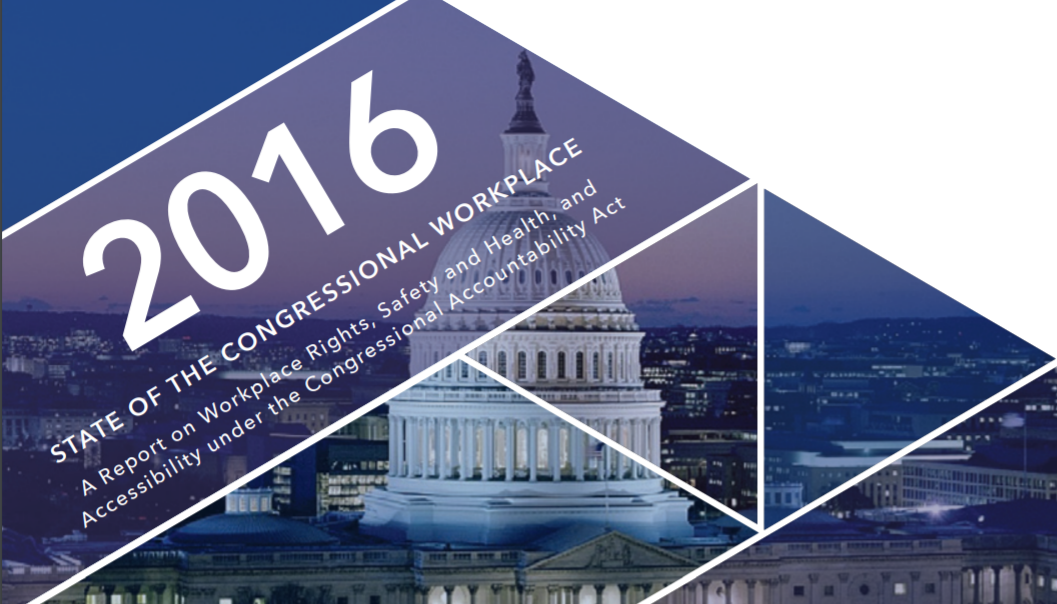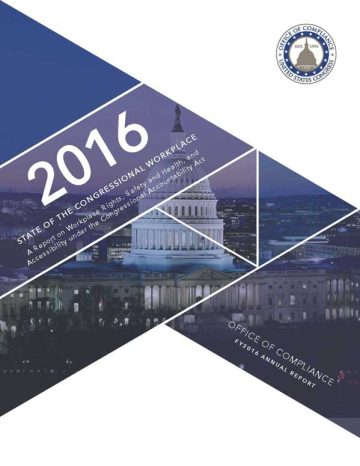On behalf of the Board of Directors for the Office of Compliance (OOC), I proudly present the FY2016 Annual Report. On January 23, 1996, the OOC first opened its doors. In the past two decades, the Office has made remarkable strides in effectively enforcing workplace rights on behalf of congressional employees. The OOC alone does the job of multiple agencies in the executive branch, including the Occupational Safety and Health Administration, the Federal Labor Relations Authority, the Equal Employment Opportunity Commission, and even the Department of Justice, with regard to issues of public accessibility.
Just this year, we inspected all congressional buildings to ensure that they are safe and accessible—a tremendous task for our small office. This Annual Report includes information culled from our formal reports of our occupational safety and health and accessibility inspections of the Capitol Hill campus. The Office of the Architect of Capitol has worked diligently and patiently with us to abate many smaller hazards and has developed a plan to tackle the larger problems around Capitol Hill. Although it will take time and energy to bring many of these historic buildings up to current standards, the goal of a safe and healthy workplace that is accessible to the public is both attainable and well worth the effort.
The safety and health of congressional employees is critical to an efficient and responsible government. And the occupational risks posed on Capitol Hill are daunting. From ensuring employee safety during the large restoration project on the Capitol dome to resolving high lead levels found in the water of the House office buildings, the OOC is ready to work cooperatively with both employers and employees to ensure that the Hill is a safe place for workers and the public.
This year, the Board issued important regulations to fully implement the employment laws that Congress applied to Capitol Hill. In February 2016, we issued regulations pursuant to the Americans with Disabilities Act to govern public accessibility in buildings leased by the government, and to further ensure that employees can anonymously request an accessibility inspection.

